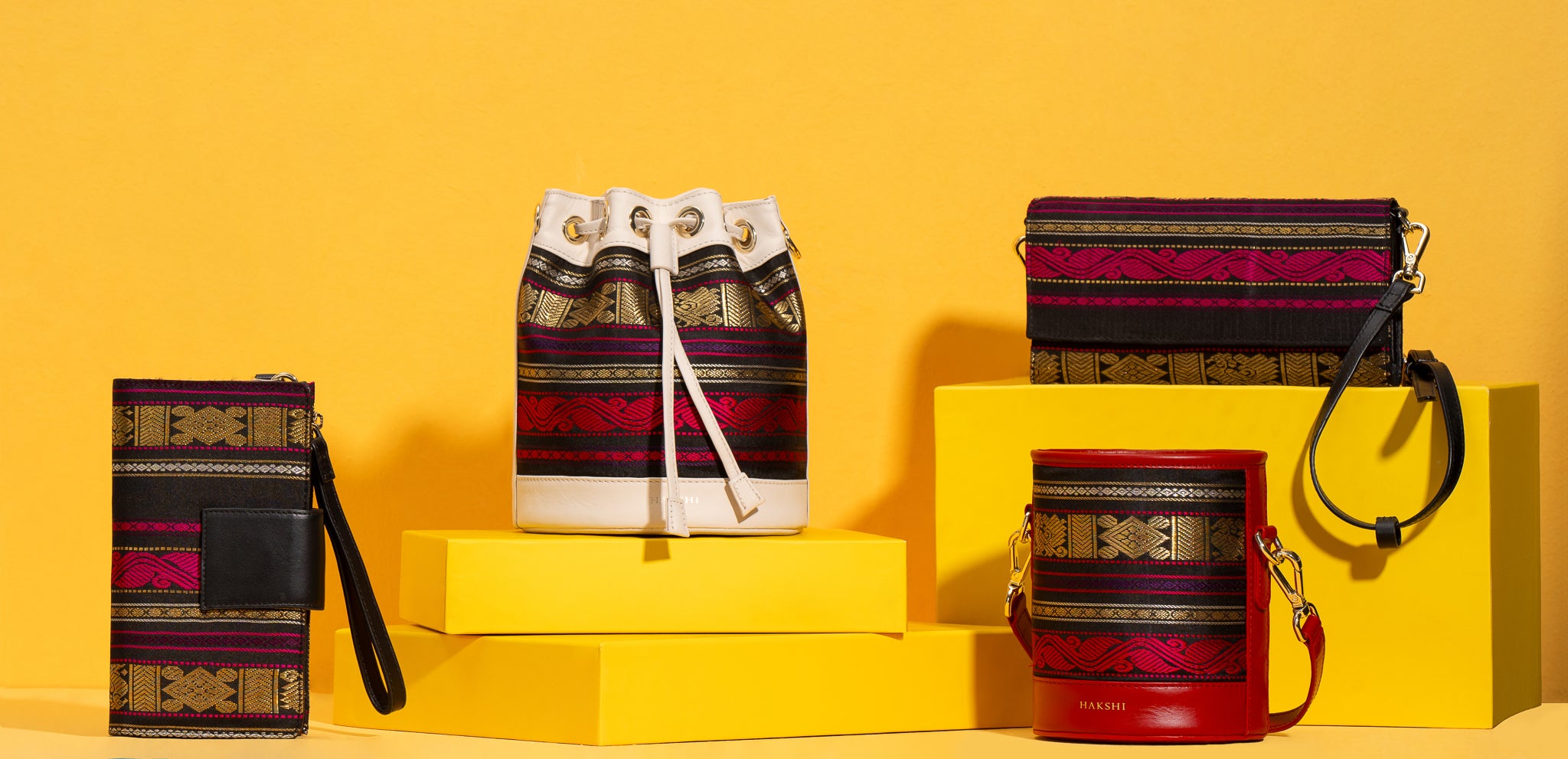A Guide to Differences Between Adai Weaving and Jacquard Weaving Techniques in Kanchipuram Silks
Kanchipuram silk sarees are a symbol of Indian craftsmanship, revered for their rich texture, vibrant colors, and exquisite zari work. Known as the queen of silk sarees, each Kanchipuram silk saree carries a story of tradition, skill, and artistry. While the silk and zari are essential elements, the weaving technique plays a pivotal role in determining the final beauty and authenticity of a saree.
Two prominent weaving techniques used in Kanchipuram silks are Adai weaving and Jacquard weaving. Understanding the differences between these techniques can help you make informed choices when selecting a pure Kanchipuram silk saree, whether for weddings, special occasions, or personal collection.

Understanding Kanchipuram Silk Weaving
Kanchipuram, a town in Tamil Nadu, has been the hub of silk weaving for centuries. Kanchipuram saree silk is renowned for:
-
Luxurious texture: Heavy silk that drapes elegantly.
-
Long-lasting color: Rich shades that do not fade easily.
-
Intricate zari work: Borders and pallus are adorned with gold or silver threads.
-
Cultural heritage: Each saree represents traditional Indian craftsmanship.

The weaving technique is one of the main factors that define a saree’s uniqueness. Among these, Adai weaving and Jacquard weaving have distinct characteristics, influencing design, speed, and price.
1. Technique Used
|
Feature |
Adai Weaving |
Jacquard Weaving |
|
Method |
Handlooms with pegged cards (Adai board) |
Jacquard machine attachment on handloom |
|
Design Control |
Designs are woven by manually inserting punch cards and lifting threads; highly labor-intensive |
Designs are controlled automatically by the Jacquard attachment using thousands of punch cards; faster and efficient |
|
Skill Level |
Requires high traditional skill and experience of the weaver |
Skill is still required, but the mechanical system reduces manual complexity |
Explanation: Adai weaving is a labor-intensive traditional technique requiring years of expertise. Each thread is carefully placed to form motifs, ensuring a truly handwoven feel. Jacquard weaving, on the other hand, uses a mechanical attachment to simplify pattern creation, allowing faster production without compromising design complexity.
2. Type of Designs Possible
|
Aspect |
Adai |
Jacquard |
|
Design Complexity |
Suitable for smaller traditional motifs, borders, and temple designs; very precise |
Supports large, intricate, continuous motifs like peacocks, annapakshi, yali, floral vines, broad buttas |
|
Design Size |
Borders and small buttas mainly |
Big pallu motifs, full-body patterns, heavy brocades |
Explanation: Adai weaving excels at smaller, highly detailed motifs, especially on borders and traditional temple designs. Jacquard weaving allows weavers to create expansive designs across the pallu and saree body, making it ideal for elaborate and large patterns.
3. Speed and Production
|
Aspect |
Adai |
Jacquard |
|
Speed |
Slow; one saree may take 10–20 days depending on design |
Faster; production time is significantly reduced |
|
Cost |
Higher due to labor and craftsmanship |
Comparatively more affordable for similar-looking heavy patterns |
Explanation: Due to manual weaving, Adai sarees are time-consuming and costlier. Jacquard weaving automates much of the patterning process, making it faster and more commercially viable while still maintaining the luxury and beauty of Kanchipuram silks.
4. Look & Feel
|
Aspect |
Adai Sarees |
Jacquard Sarees |
|
Texture |
Motifs feel raised and firm; borders have sharp definition |
Surface may feel flatter and smoother; pattern is standardized |
|
Aesthetic |
Purely traditional Kanchipuram feel; motifs appear hand-crafted |
Uniform and elaborate designs; sometimes appear modern or ornamental |
Explanation: Adai sarees offer a tactile, handwoven texture and traditional aesthetic, while Jacquard sarees give a uniform, polished finish. Both are beautiful, but the feel and detailing can help differentiate a handwoven piece from a machine-assisted one.
5. Heritage Value
Adai weaving is considered a heritage craft technique, often used for authentic Kanchipuram Korvai sarees, where the body and border are woven separately. Jacquard weaving is a later adaptation that made large and complex designs commercially viable without sacrificing intricate detail.
In Simple Terms:
|
Adai |
Jacquard |
|
Hand-controlled traditional weaving |
Mechanized pattern-controlled weaving |
|
Time-consuming but authentic |
Faster with modern capabilities |
|
Used for borders and temple motifs |
Used for elaborate pallus and all-over designs |
|
Rich heritage value |
Higher design variety & commercial production |
Why Weaving Technique Matters
Choosing the right weaving technique depends on your needs:
-
Weddings and Special Occasions: Adai weaving offers unmatched authenticity and heritage, making it ideal for bridal wear and heirloom pieces. Explore our wedding Kanchipuram sarees for exquisite options.
-
Everyday Wear or Gifting: Jacquard weaving provides complex designs with faster production and lower price, suitable for stylish yet accessible Kanchipuram silks.
-
Investment Value: Adai sarees, due to their labor-intensive craftsmanship, often appreciate in value and are considered collectible.

Buying Kanchipuram Silk Sarees Online
With the rise of kanchipuram silk saree online shopping, it is essential to verify authenticity:
-
Look for certifications of handwoven Kanchipuram silk.
-
Check product descriptions specifying weaving technique (Adai or Jacquard).
-
Examine high-resolution images showing borders, pallus, and zari detailing.
-
Read customer reviews about texture, weight, and finish.
Whether you’re shopping for pure Kanchipuram silk sarees, wedding Kanchipuram sarees, or sarees silk Kanchipuram, knowing the weaving technique ensures you get a piece that matches your expectation of luxury and heritage.

Conclusion
The distinction between Adai weaving and Jacquard weaving highlights the evolution of Kanchipuram silks from traditional handcrafting to modern mechanized designs. While Adai weaving preserves the soul of handloom artistry with intricate borders and temple motifs, Jacquard weaving allows for elaborate patterns, large motifs, and faster production.
Owning a silk saree Kanchipuram whether handwoven Adai or machine-assisted Jacquard means embracing the beauty, elegance, and heritage of one of India’s most iconic sarees. Understanding these differences ensures that you choose the right Kanchipuram silk saree for your special occasion, wedding, or personal collection.






Leave a comment